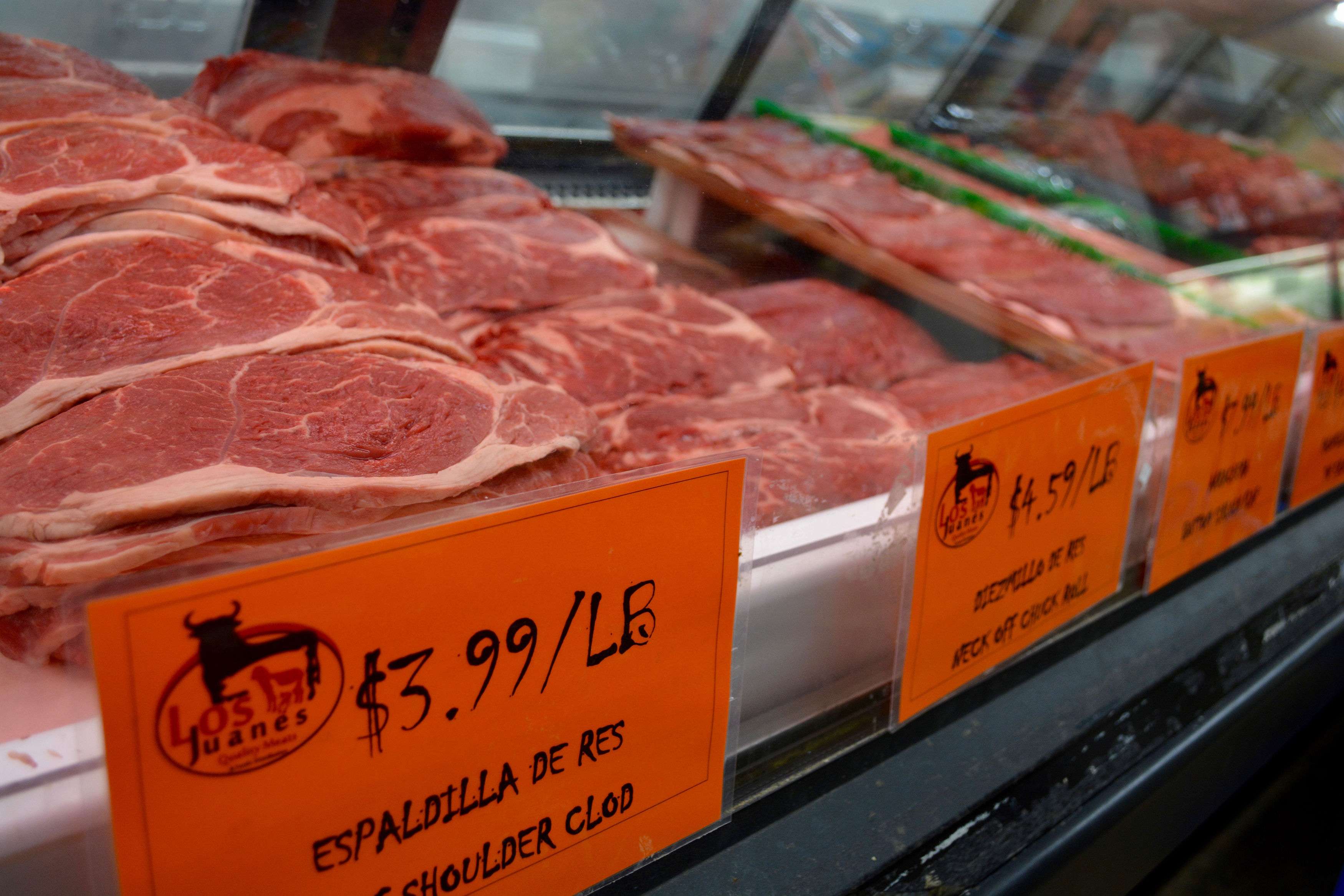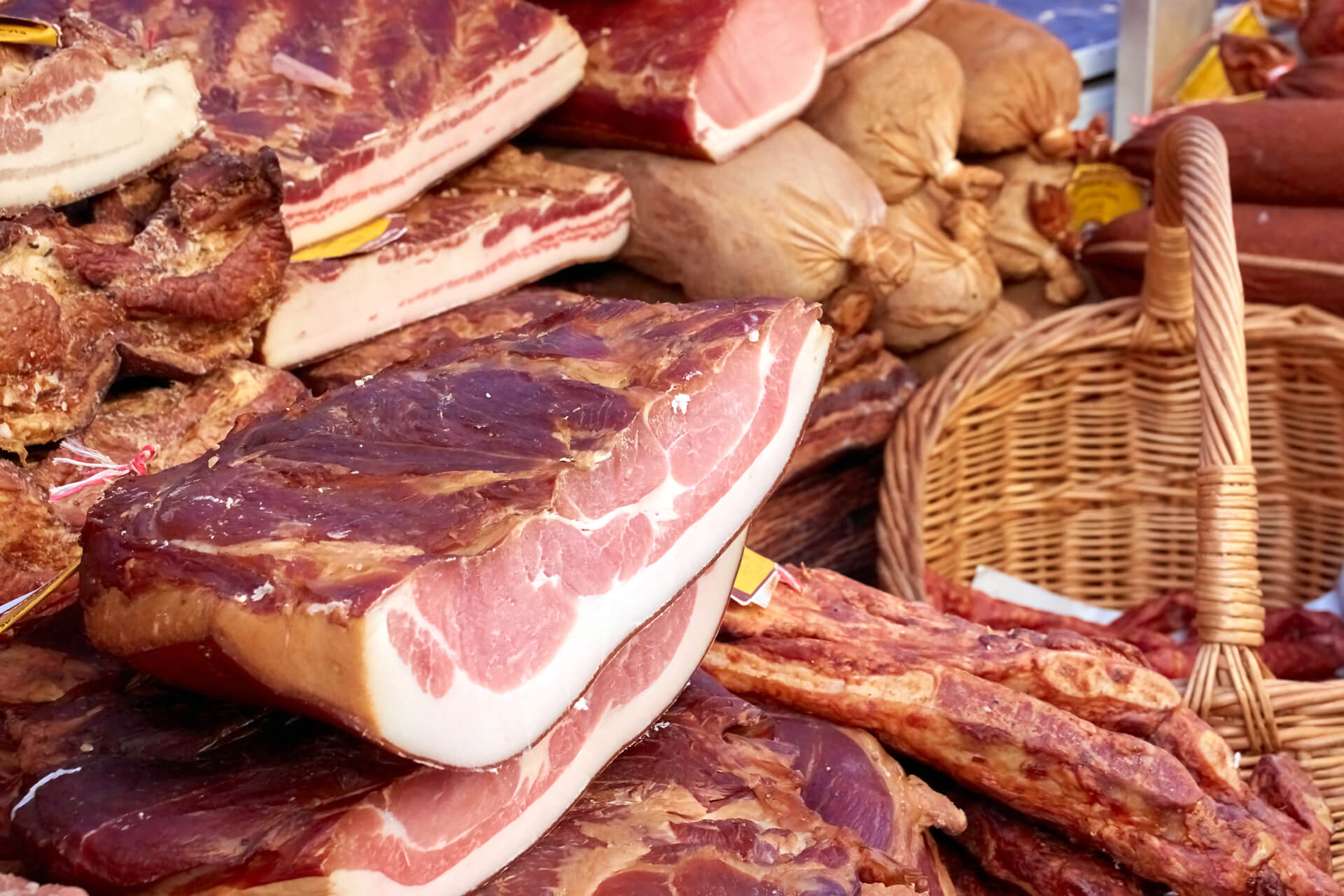Check Out the Neighborhood Flavor at Bagley Farms Meat Market Edwardsville IL: Fresh and Delicious
Check Out the Neighborhood Flavor at Bagley Farms Meat Market Edwardsville IL: Fresh and Delicious
Blog Article
Discover the Art of the Butcher's Cut in a Modern Meat Market
In the ever-evolving landscape of contemporary meat markets, the butcher's cut has actually transcended its traditional roots, merging olden workmanship with modern practices. Today's butchers are not merely cpus of meat; they are well-informed artisans who highlight sustainability and honest sourcing. Their competence in picking and preparing cuts customized to certain cooking demands supplies an unequaled eating experience. Yet, what truly establishes the contemporary butcher apart is their capability to forge a deeper connection in between consumers and the origins of their meat. Exactly how do these masters balance custom with development, and what implications does this have for the future of meat consumption?
Advancement of Butchery Methods
The advancement of butchery techniques reflects a rich tapestry of technology and adjustment driven by advancements in innovation, adjustments in customer need, and a much deeper understanding of meat science. Historically, butchery was a craft gave via generations, with approaches refined over centuries to take full advantage of yield and flavor. The commercial revolution ushered in mechanization, changing traditional techniques and enabling large handling.
The mid-20th century saw butchery techniques further improved by clinical insights right into muscle biology and meat aging, enhancing both inflammation and taste. Technologies like vacuum product packaging and refrigeration prolonged item shelf-life, permitting butchers to branch out offerings and enhance high quality control. This period additionally noted the increase of specific equipment, such as band saws and meat slicers, which increased precision and effectiveness in meat handling.

Electronic systems currently assist in tracking animal provenance and maximizing cuts to fulfill specific client choices. In addition, a resurgence in artisanal butchery has emerged, mixing standard skills with modern understanding to provide to consumers looking for moral and sustainable meat options.
Comprehending Meat Cuts
Understanding the details of meat cuts is essential for both butchers and consumers looking for top quality and worth. Each cut comes from a various component of the animal, giving unique tastes, appearances, and cooking methods - bagley farms meat market edwardsville il. Mastery of these distinctions not just boosts cooking experiences yet also makes the most of the energy of each carcass. For butchers, specific cuts show skill and regard for the craft, making certain very little waste and optimal return.

Comprehending muscle mass structure is crucial; muscular tissues used much more frequently by the animal have a tendency to be tougher and are best fit for slow cooking get more methods, while less-used muscular tissues, like those located in the loin, are a lot more tender and ideal for barbecuing or roasting. Familiarity with these differences encourages customers to make informed choices, improving their cooking ventures.
Choosing Quality Meat
Choosing the appropriate meat includes even more than just selecting an aesthetically attractive item from the display screen. bagley farms meat market edwardsville il. The art of selecting top quality meat needs a critical eye and understanding of particular features that indicate freshness and quality. To start with, focus on the shade; beef should have an intense, cherry-red shade, while lamb must show a soft pink tone, and pork a pale pink. This shows the meat is fresh and hasn't been revealed to oxygen for too lengthy.
Second of all, consider the marbling, which describes the white streaks of fat within the muscular tissue. Proper marbling is a key sign of tenderness and taste, as it melts during food preparation, enhancing the meat's juiciness. Keep in mind, greater marbling typically associates with superior high quality cuts, such as USDA Prime.
Texture is one more essential variable; meat should really feel solid to the touch, not slimy or overly soft. Furthermore, bear in mind the scent. Fresh meat ought to have a tidy, neutral smell, without any type of sour or off-putting odors.
Matching Cuts With Cooking Methods

Conversely, harder cuts like brisket and chuck roast are rich in collagen, which damages down into jelly when prepared gradually. These cuts are perfect for braising or sluggish roasting, enabling the meat to soften visit this site in time and establish deep, complex flavors. In a similar way, cuts such as brief ribs and pork shoulder prosper with slow-cooking methods, where expanded cooking times transform their robust textures into delicious meals.
Lamb shanks and oxtail, which call for prolonged cooking to tenderize, are perfect prospects for cooking or slow simmering. These methods coax out abundant, passionate flavors while maintaining wetness. see By recognizing the special characteristics of each cut, chefs and home chefs alike can raise their cooking creations, making sure each meal is both pleasing and memorable.
The Butcher's Duty Today
Navigating the developing landscape of the modern meat market, the butcher's function today extends past mere prep work of cuts. Contemporary butchers are cooking craftsmens, instructors, and advocates for sustainable techniques.
In enhancement to crafting specific cuts, butchers now engage directly with customers, supplying cooking advice and tailoring selections to match individual demands and choices. Their experience in meat aging, marbling, and taste accounts encourages consumers to make educated decisions, enhancing their culinary experiences. This tailored solution exhibits the butcher's developing duty as a relied on consultant in the kitchen.
Furthermore, butchers are critical in reducing waste, using whole animals to create varied products such as sausages and supplies. This comprehensive approach not only appreciates the animal however additionally lines up with modern sustainability goals. This way, the modern-day butcher symbolizes both custom and innovation, adjusting to an ever-changing market while protecting the creativity and integrity of their craft.
Conclusion
Proficiency in recognizing diverse meat cuts and top quality signs encourages butchers to supply informed recommendations, straightening certain cuts with ideal cooking techniques. By honoring historic methods while embracing contemporary needs, the butcher's role remains essential in today's advanced meat market.
Report this page